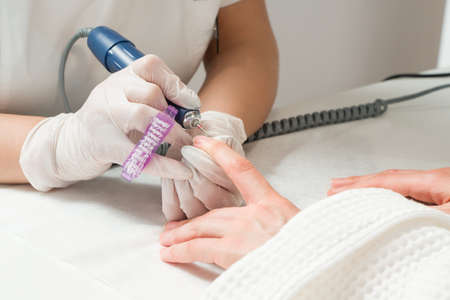1. Importance of Post-Procedure Skincare
After undergoing a cosmetic dermatology procedure—whether its a chemical peel, laser treatment, microneedling, or injectable—what you do in the days and weeks that follow plays a major role in how well your skin heals and how long your results last. Proper post-procedure skincare isn’t just about comfort; it’s essential for preventing complications like infection, irritation, and scarring.
Why Post-Procedure Care Matters
Your skin is especially vulnerable after a cosmetic treatment. Procedures that target deeper layers of the skin can disrupt the natural barrier, leaving it sensitive, dry, or inflamed. Using the right products during this time helps soothe irritation, restore moisture, and speed up recovery.
Key Benefits of Proper Post-Procedure Care:
| Benefit | Why It Matters |
|---|---|
| Faster Healing | Supports skin regeneration and reduces downtime. |
| Reduced Risk of Infection | Creates a clean environment to protect compromised skin. |
| Less Redness & Irritation | Calms inflammation and soothes sensitivity. |
| Longer-Lasting Results | Helps maintain the improvements achieved through treatment. |
Trusting Dermatologist-Recommended Products
Board-certified dermatologists often recommend specific products that are formulated to be gentle yet effective for healing skin. These typically contain ingredients like hyaluronic acid, ceramides, peptides, and anti-inflammatory agents that promote healthy recovery without causing further irritation. By choosing dermatologist-recommended options, youre giving your skin exactly what it needs during this critical phase.
Tip:
Avoid active ingredients like retinoids or exfoliating acids unless specifically cleared by your provider—they may be too harsh during the healing process.
This is why following a tailored post-procedure regimen with trusted products makes all the difference in achieving radiant, healthy-looking results.
2. Gentle Cleansers for Sensitive Skin
After a cosmetic procedure, your skin is in a delicate state and needs extra care—especially when it comes to cleansing. Using the wrong cleanser can cause irritation, dryness, or even delay healing. That’s why dermatologists recommend gentle, non-foaming cleansers specifically formulated for sensitive or post-procedure skin. These products help remove dirt, oil, and residue without stripping away the skins natural moisture barrier.
What to Look For in a Post-Procedure Cleanser
- Fragrance-Free: Fragrances can irritate healing skin.
- Sulfate-Free: Sulfates are harsh detergents that can cause dryness and sensitivity.
- Creamy or Lotion-Based Textures: These are less likely to disrupt the skin barrier.
- pH-Balanced: Helps maintain the skin’s natural acidity for optimal healing.
Top Dermatologist-Recommended Gentle Cleansers
| Product | Main Benefits | Best For |
|---|---|---|
| Cetaphil Gentle Skin Cleanser | Soap-free, fragrance-free, non-irritating formula | All skin types, especially dry or sensitive skin |
| CeraVe Hydrating Facial Cleanser | Contains ceramides and hyaluronic acid to restore moisture barrier | Dry or compromised skin after procedures like laser or microneedling |
| Avene Tolerance Extremely Gentle Cleanser Lotion | No-rinse formula with minimal ingredients to reduce risk of reaction | Easily irritated or allergic-prone skin post-procedure |
| La Roche-Posay Toleriane Hydrating Gentle Cleanser | Mild, creamy texture with thermal spring water for soothing effect | Sensitive and redness-prone skin after chemical peels or facials |
How to Use Your Cleanser After a Procedure
Your dermatologist may advise waiting 24–48 hours before cleansing your face depending on the treatment received. Once approved, gently apply the cleanser using clean hands (not a washcloth), rinse with lukewarm water, and pat dry with a soft towel—no rubbing! Always follow up with a moisturizer recommended by your provider.
![]()
3. Hydrating and Soothing Moisturizers
After any cosmetic procedure, your skin needs extra care to support healing and minimize irritation. One of the most important steps in your post-procedure skincare routine is using a dermatologist-recommended moisturizer that hydrates deeply and calms sensitive skin.
Why Moisturizing Is Crucial After Procedures
Procedures like chemical peels, laser treatments, or microneedling can leave your skin feeling dry, tight, or inflamed. A good moisturizer helps:
- Restore the skin’s moisture barrier
- Reduce redness and flakiness
- Soothe irritation and itching
- Support faster recovery
Top Dermatologist-Recommended Healing Moisturizers
Here are some of the most trusted moisturizers that dermatologists often recommend for post-procedure care in the U.S.:
| Product | Main Benefits | Key Ingredients | Skin Type |
|---|---|---|---|
| CeraVe Healing Ointment | Deep hydration and barrier repair | Ceramides, Hyaluronic Acid, Petrolatum | Dry to very dry, sensitive skin |
| Avene Cicalfate+ Restorative Cream | Soothes irritation and promotes healing | Copper-Zinc Sulfate Complex, Thermal Spring Water | Sensitive, reactive skin |
| La Roche-Posay Cicaplast Baume B5 | Calming balm for red or flaky areas | Panthenol (Vitamin B5), Madecassoside, Shea Butter | All skin types, including post-procedure |
| EltaMD Barrier Renewal Complex | Strengthens skin barrier and reduces inflammation | Niwosome delivery system with ceramides and enzymes | Mature or compromised skin barriers |
How to Use Post-Procedure Moisturizers Effectively
Step-by-Step Application:
- Cleanse gently: Use a mild, non-foaming cleanser approved for post-procedure use.
- Apply while damp: Lock in moisture by applying the moisturizer when your skin is still slightly moist.
- Avoid harsh ingredients: Skip products with alcohol, fragrance, or active acids during recovery.
- Reapply as needed: Don’t hesitate to reapply throughout the day if your skin feels tight or dry.
Selecting the right post-procedure moisturizer can make a huge difference in how quickly your skin heals—and how comfortable you feel during recovery. Stick with products that are fragrance-free, dermatologist-tested, and formulated specifically for compromised or sensitive skin.
4. Sunscreen for Post-Treatment Protection
After any cosmetic procedure, protecting your skin from the sun is absolutely essential. Your skin is more vulnerable than usual, and even a little UV exposure can lead to irritation, hyperpigmentation, or delayed healing. That’s why dermatologists strongly recommend using broad-spectrum sunscreens that shield delicate, healing skin from harmful UVA and UVB rays.
Why Broad-Spectrum Matters
Broad-spectrum sunscreens protect against both types of ultraviolet rays—UVA, which causes aging and long-term damage, and UVB, which causes burns. Post-procedure skin is particularly sensitive to both types of damage, making this kind of protection a must.
What to Look for in a Post-Procedure Sunscreen
Not all sunscreens are created equal when it comes to post-treatment care. Here are the top features dermatologists look for:
| Feature | Why Its Important |
|---|---|
| Broad-Spectrum Protection | Shields against both UVA and UVB rays |
| SPF 30 or Higher | Offers adequate protection for healing skin |
| Mineral-Based (Zinc Oxide or Titanium Dioxide) | Gentle on sensitive skin; less likely to cause irritation |
| Fragrance-Free & Non-Comedogenic | Avoids unnecessary irritation and clogged pores |
Top Dermatologist-Recommended Sunscreens
Here are some trusted options that many U.S. dermatologists recommend for post-procedure protection:
- EltaMD UV Physical Broad-Spectrum SPF 41: A mineral sunscreen with tinted coverage thats gentle enough for post-laser or peel treatments.
- CeraVe Hydrating Mineral Sunscreen SPF 30: Offers broad-spectrum protection plus ceramides to help restore the skin barrier.
- La Roche-Posay Anthelios Mineral SPF 50: Lightweight and formulated for sensitive skin, ideal after microneedling or chemical peels.
Application Tips
Apply sunscreen as the final step in your skincare routine every morning—even if youre staying indoors. Reapply every two hours if youre outside or sweating. Remember: consistent use is key to preventing sun damage while your skin heals.
5. Ingredients to Look for (and Avoid)
After a dermatological procedure like laser treatment, microneedling, or chemical peels, your skin is in a fragile state. Choosing the right skincare products is essential for soothing irritation, speeding up recovery, and avoiding complications. Here’s a simple guide to ingredients that can help—or hurt—your post-procedure healing.
Healing Ingredients Dermatologists Love
The best post-procedure products are packed with ingredients that calm inflammation, support the skin barrier, and promote cell regeneration. These are some of the top dermatologist-recommended ingredients to look for:
| Ingredient | What It Does | Why Its Great Post-Procedure |
|---|---|---|
| Hyaluronic Acid | Hydrates and plumps the skin | Provides deep moisture without irritation |
| Ceramides | Strengthens the skin barrier | Helps protect sensitive skin during recovery |
| Panthenol (Vitamin B5) | Soothes and moisturizes | Reduces redness and supports healing |
| Aloe Vera | Cools and calms irritated skin | Naturally anti-inflammatory and gentle |
| Centella Asiatica (Cica) | Boosts collagen production and calms inflammation | Speeds up wound healing and reduces sensitivity |
Ingredients to Avoid After a Procedure
Certain common skincare ingredients can be too harsh on compromised skin. Using them too soon after a procedure could lead to stinging, burning, or delayed healing. Here’s what to steer clear of until your skin has fully recovered:
| Ingredient | Why to Avoid It |
|---|---|
| Retinoids (Retinol, Tretinoin) | Can cause peeling and increase sensitivity during healing |
| Alpha Hydroxy Acids (AHAs) | Might irritate freshly treated skin due to their exfoliating nature |
| Benzoyl Peroxide | Too drying and harsh for healing skin |
| Fragrance (Synthetic or Natural) | Common trigger for irritation or allergic reactions post-treatment |
| Alcohol-Based Products | Can severely dry out and inflame the skin barrier when its most vulnerable |
Pro Tip from Dermatologists
If youre unsure whether an ingredient is safe post-procedure, always opt for fragrance-free formulas labeled as “gentle,” “non-comedogenic,” or “for sensitive skin.” When in doubt, check with your dermatologist before introducing new products into your routine.
Your Skin Deserves a Gentle Touch
The right ingredients can make all the difference in how quickly and comfortably your skin heals after a treatment. Stick to proven, calming ingredients—and give your complexion the care it needs to bounce back beautifully.


